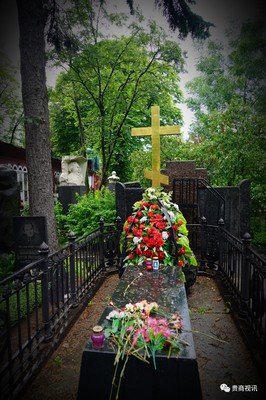《圣女》的观后感大全
《圣女》是一部由卢奎西亚·马特尔执导,Mercedes Morán / Carlos Belloso / Alejandro Urdapi主演的一部剧情类型的电影,特精心从网络上整理的一些观众的观后感,希望对大家能有帮助。
《圣女》精选点评:
●#HKIFF# 在被困与倦怠的封闭空间里探讨宗教、欲望与女性身份。水的意象、以声音作为主观视角以及切片式展现内心状态都是Martel一以贯之的手法。
●特写漂亮,脸庞好记。
●瞧见阿莫多瓦参与制片,还真特别得阿莫多瓦。马特尔第二部长片电影,带来了奇妙的视听感受,同其处女作般克制也同样湿润,似乎是将那《沼泽》中的“圣女”二字取来,却是另作他用。将宗教与性欲扭于一体,共同完成“圣女”的成长启蒙,孤独的陪伴更源于家庭与好友,成长亦如生存般泥泞。天主带来神圣之光,医生反成被救赎之人。喜欢最后那个游泳收尾的长镜头!
●不好看…导演没试图讲故事直接就讲道理了
●给我更大的触动还是在于特写镜头的压迫感,感觉更能接近展示出人物内心若有似无的情欲,从道德伦理/社会角度进行批判式的分析我觉得是不合适的。
●绝逼是最垃圾的翻译
●醫生:「扮演他人是一種極佳的自療。」老闆娘:「那你治療自己的時候會扮演什麼?」「扮演醫生。」──同理,誰又是聖女(The Holy Girl)的演員呢?
●哦是的,那嘀哩咕噜的水!水就是电影,它流动着,没有形状,但似乎能包容整个世界,这是画外空间的声音力场,是有形或无形的音乐韵律,也是马特尔作品中突破其看似冰凉的身体切割与浅焦凝视之外,最超验灵动的地方。
●胶片真的太美了
●如此自由舒适的调度和构图,温柔残忍俱全,相见恨晚。
《圣女》观后感(一):仁慈的,怜悯的心
欲海慈航这名字好象是从索菲亚罗兰的一部老片里借来的,本片英文名是holy girl。
这是年轻的阿根廷女导演Lucrecia Martel第二部长篇作品,依旧是关于阿根廷西北部沼泽地区人民的生活,就好象贾樟柯的汾阳情结。她首部作品《魔沼La Cienaga》参加了圣丹斯电影节和2001年的柏林电影节,从此一鸣惊人。而《没有圣诞老人》则被戛纳的正式竞赛单元提名。
这部作品刚开始看的感觉是非常象阿莫多瓦Pedro Almodóvar的东西,充斥着不知所谓的对白和无关紧要的情节,但其中有段爆发力极强的运动镜头给人留下惊心动魄的印象。后来查过资料才知道难怪呢,本片的两大制片就是阿莫多瓦兄弟:其中Agustín Almodóvar是 Pedro Almodóvar的弟弟。看来Lucrecia Martel受Pedro Almodóvar的影响很大,也许Pedro Almodóvar是看见她作品中有很多亲切的东西才不远万里跑去帮她的吧。
整个看下来的感觉还是挺厉害的,故事讲的是女孩受到一个医生的性骚扰,不知不觉间,也不知是出于爱还是宗教的怜悯,她情不自禁去接近那医生~~~~羡慕国外的导演,想拍宗教题材就拍得淋漓尽致,而且不会受影响地去歪曲和粉饰人性,于是天主的无所不在和个体的孤绝就在本片中完美统一了。
《圣女》观后感(二):圈圈闲话——圣女
话题: 你好 想请教一下
the holy girl 这部电影说了什么? 我觉得作为一个男性根本无法理解
陈重重说:
你好,请教称不上。
对我来说,holy girl讲的是那个女生的成长,包括性和心智。特别表现在,她对医生有种宗教救赎的美好愿望。她甚至将这件事作为自己一种考验,一种来自信仰赋予的考验。旁支是她与母亲,与女伴的关系。很喜欢这个片子原因还在于,片子的迷人气氛,旅馆的空气湿度光线,都仿佛应和着这个过程。
圈圈:
这就是我身为一个男性所无法理解的。在我看来,所谓的救赎是一种一厢情愿似地愚昧或者说借口。那个女孩进到医生的房间里,几乎强行地索吻完全是性的驱动,并非某种宗教般的神圣。她在房间床上熟练地手淫正说明了这点。另外我不知道导演选择这个女孩子是否有形象上的考虑,这个女孩子眉间甚宽,目光外偏,在大部分画面中眼神是没有焦点的,空洞的,其实正表现着一种迷惘。
如果说“耳鸣”是作为一种成熟的标志(一般中年女性容易有耳鸣的毛病),那么这种标志也是作为某种缺失或病态。如果一部电影多少反映了导演的个人体验,那么这位女导演的经历和心志就着实令人怀疑了。
我看这部片非常恼火,性渴望本身是很自然的,却偏偏要裹上所谓的救赎,非常之猥琐。
我把和一位女孩子的对话写在这儿,因为这部片从男性和女性的角度去看可能会产生两种截然不同的结果。
我只能说我以为这部片糟糕极了,非常虚伪。
《圣女》观后感(三):导演的采访
中文字幕版真的很让人费解难懂。和一个法国朋友一起看的。他看到一些对话会笑,而我完全不知所云。所以去官网找到了这个采访。
What is La Niña Santa?
It is a tale about good and evil, not about the confrontation between good and evil, but about the difficulties in distinguishing one from the other. A story about the dangers of differentiating good from evil.
Why this interest in religion in this particular moment in history and in a society so alienated from what is truly religious, so desacralized?
I am interested in the Catholic religion because it is my religion; it is where I learned a way of thinking, a system of thought where the sense of things, the sense of one’s existence, reveals as a certainty. The trust in one God that has arranged a plan for everything, where things are organized towards an end. But when through different means one reaches the conclusion that such an Architect does not exist, in those terms at least, that this existence is much more mysterious and less justified, it is inevitable to feel rather helpless. Helplessness is not something sad as long as we understand that we take back the reins of our own existence, as well as its responsibilities, such as the administration of justice.
Why does La Niña Santa take place during a medical convention?
There is something between medicine and holiness that interests me. The sick bodies and the healthy bodies. The lepers of Job, where God and the Devil hide. The saints sick from saintliness and their miraculous cures. The wounds of stigmata and the concept of the Passion. The doctor of the soul. The sick so sick that they look like monsters. In ancient times the appearance of a monster, somebody physically malformed, was a sign of the divine. The monster, the one that shows, that reveals divine intentions. Monsters have mutated with time and then came the degenerate ones, those without the Arian standards, the serial killers dressed in human skin, the poor in general who represent a menace with their monstrous needs. We are a monstrous species that betrays all that is foreseeable. Generations and generations of freaks that do not allow us to give anything for granted, that should oblige us to review the laws all the time, to think again about the meaning of happiness, about the possibility of finding a sense of happiness sufficiently diverse so as not to leave anyone out, to see each newborn as an infinite mystery of possibilities. La Niña Santa is a sort of surgical story that intends to draw a line between live tissue and moral prosthesis.
